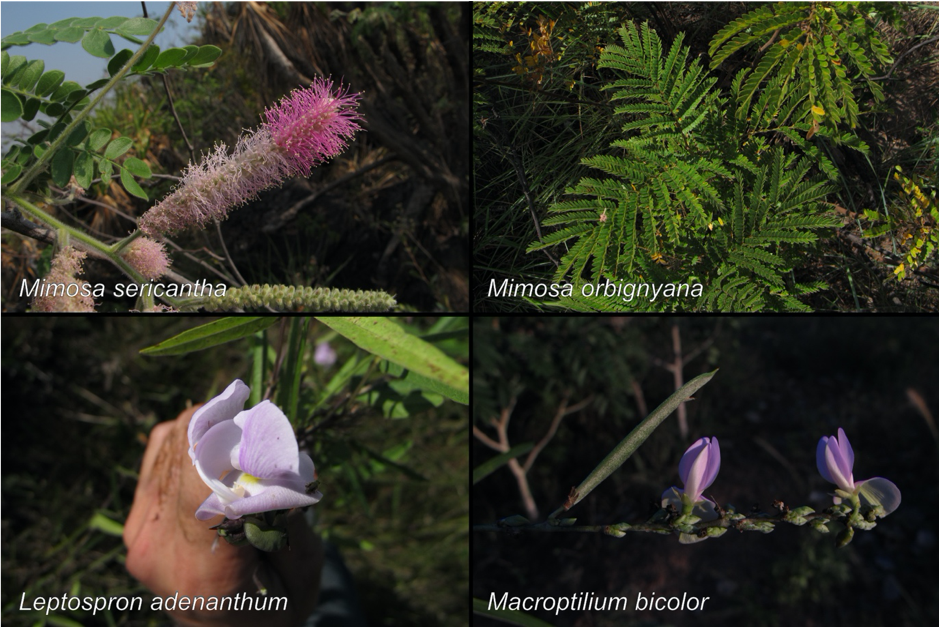Coordinators: Renske Onstein (German Centre for Integrative Biodiversity Research (iDiv), Germany) & Leonardo Borges (Universidade Federal de São Carlos, Brazil)
Introduction
Even after generations of work by an army of legume workers, the myriad and beauty of legume morphology, structure and function are still a mystery. How and when did all those traits evolve? What factors are behind their evolution? How do they dictate and influence how legumes interact with the world? Driven by such questions, the legume traits working group was founded. The working group aims to increase communication between researchers studying legume traits to facilitate collaboration and avoid redundant data collection efforts. We also want to promote sharing and integration of data and collection protocols.
Strategy & Future plans
So far, there are several ongoing projects in the legume trait world. Some of us are interested in the ecology of traits (e.g., herbivore defense – K. Dexter et al.; drought adaptation – F. Velasquez et al.), others focus on the (macro-)evolution of traits in certain lineages (e.g., pod and leaf traits in Mimosoids/Albizia – R. Onstein/E. Ruttimann et al.; whole plant morphology – L. Borges). We study a range of traits – from spines to leaves to roots to fruits – and use a range of methods to obtain trait data, such as (automatically) screening monographs and floras, field-work, or assessing herbarium specimens, including online specimens. One novel approach being explored by W. Cardinal-McTeague and A. Bruneau, is assessing reflectance/spectral emission from herbarium samples to associate this with other, more difficult to measure traits. When optimized, this method has the potential to quickly assemble massive amounts of trait data for all herbarium preserved collections.
To coordinate ongoing and future trait sampling efforts, we collectively keep track of on-going projects, share already published trait and wider morphological data, and maintain a list of traits, character states and their definitions. We also established a shared folder for depositing legume monographs for trait mining and as a valuable source and overview of systematic work across legumes.
Join the Working Group
We welcome your input and ideas in the legume traits working group, or simply to receive your favorite monographs. Please get in touch if you would like to become part of our group, are interested in working with traits, have ongoing trait-related projects or future plans, or simply to share a virtual cup of coffee and talk more about the mysterious world of legume traits. Our group is still growing, and we welcome anyone interested in legume (functional) traits to join our efforts. To get involved, please contact Renske Onstein or Leonardo Borges
